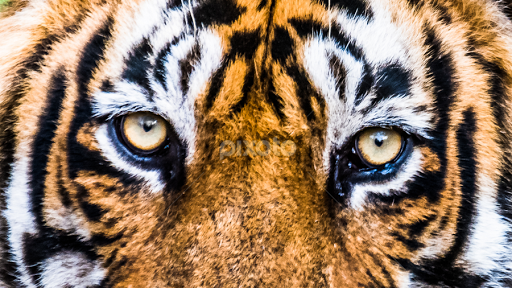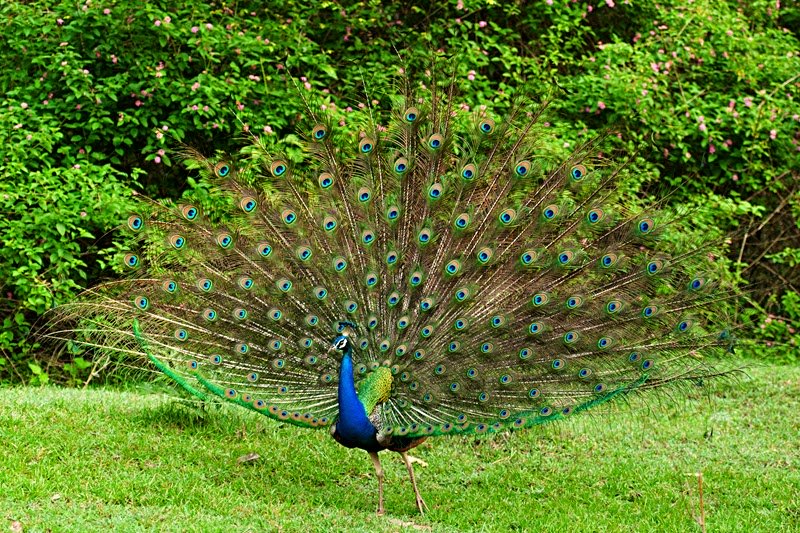- Home
- National symbols of India
- National Animal of India
National animal of India
National Animal of India:
Quick Facts
National animal of India: Bengal Tiger
Adopted on: 1972
Found in: India, Nepal, Bhutan, Bangladesh and Sri Lanka
Kingdom: Animalia
Conservation Status: Endangered on IUCN red list.
Life span: 8-10 years
The Royal Bengal Tiger is considered as the National animal of India. Until 1972, Lion was the National animal of India, later on in 1972, the thick yellow coat of fur with black stripes Tiger was made the National animal of India. Tiger shows strength, agility and tremendous power which made it the National animal of India.
Tiger was considered as the National animal of India over Lion because tiger was present all over the country at different patches while Lion was present only in Gir Forests also the population of tiger was decreasing drastically so to protect and save tiger it was made as the national animal of India. National animal of India is another important National symbol of India
Royal Bengal Tiger is one of the most elegant and graceful Carnivores animal found in the Indian subcontinent region. It is a perfect animal to represent any country for the characters mentioned above.
The scientific name of the Royal Bengal tiger is Pantherea tigris tigris and is one of the largest among the four big cats Leopard, Lion, Tiger and Jaguars which belong to the same family. The Royal Bengal tiger is now listed as Endangered by IUCN Red List since 2008.
Scientific classification of Royal Bengal tiger
The scientific classification of this
beautiful animal is as follows
Kingdom: Animalia
Phylum: Chordata
Clade: Synapsida
Class: Mammalia
Order: Carnivora
Family: Felidae
Genus: Panthera
Species: Panthera tigris
Subspecies: Panthera
tigris tigris
Physical appearance of National animal of India
Royal Bengal tigers are one of the most graceful and handsome animal to watch for. It is a very ferocious wild animal and one can see the ferocious in the eyes of the big cat.
The tigers
weigh around 300 kilograms and stretches around 2 meters long. The entire body
of the tiger is covered with thick fur which is reddish brown to orange in
colour. It has black or brown stripes all over body. The pattern of stripes differs from tiger to
other which helps in identification.
Read more about National Parks in India
Male tiger grows up to 10ft and the female grows up to 9 ft in height. The Royal Bengal tiger has a very muscular body with very strong and powerful forelimbs. The hind legs are longer than the fore legs which help the tiger to push its body and help in running fast. They have padded feet which helps them to move softly so that the prey cannot hear the sound of its movement.
The weight of male Bengal tiger is between 220 to
260 kg., and weight of female Bengal tiger is between 130 to 160 kg. Size of
male tiger is up to 10 ft. and female size is up to 9 ft. including the tail
and a shoulder height between 2.5 ft. to 3.3 ft. Color is yellow to light
orange with stripes ranging from dark brown to black. Every tiger has unique
pattern of stripes on their body.
Read more about the monuments in India
The standard color of a Bengal tiger is dark or light orange body with black stripes coming down the sides. Their ears are small and rounded and their eyes are round and amber in color. Night vision of tigers is about six times better than humans.
The belly and the interior parts of the limbs are white and the tail is orange with black rings. Tigers have a brain that weighs over 300 g.
The hind legs of the tiger are longer than their
front legs. The skull of the tiger is stout and rounded in shape which provides
more support for their powerful jaws.
Tigers have large fangs for killing and to hurt the prey. Bengal tigers have the longest canine teeth up to 3 inches in size. Bengal tigers also have large and retractable claws up to 4 inches in size, are used to grasp and hold onto prey. Adult Tigers have 30 teethes in total.
Tigers have a very sharp eyes and in front of the face rather than towards the sides of the face. Tigers hunt alone and they prefer to hunt at night. The night vision of the tigers is excellent because the shape and the structure of the eyes helps it to get maximum light during night time. Due to the retinal adaptation the light reflects back to the retina giving tiger a good vision during night times.
Usually the life of the wild tiger is around 10years
and while a tiger in zoo can survive double the time of that of a wild tiger.
Distribution and Habitat of Royal Bengal tiger
The big cat is found in various parts of Indian Subcontinent like Sri Lanka, Bangladesh, Nepal and Bhutan. The population of tiger in India was slowly declining even after taking various measures to protect the endangered animal.
In India tiger is found in
places like Western and the Eastern Ghats and the Gangetic plains. Some of the
important national parks where tigers are present in India are Bandipur
National Park, Nagarjunasagar Tiger Reserve, Sathyamangalam- Mukurthi-
Mudumalai Landscape, Sunderbans National Park, Kudremukh, Dandeli, and
Brahmaputra flood plains, Sri Venkateshwara National Park, Bandhavagarh and
Ranthambore Tiger Reserve.
To preserve and protect tiger from extinction there are around 50 tiger reserves in India which are governed and monitored under Project Tiger which is administered by National Tiger Conservation Authority. With many initiatives programmes the number of tigers rose from 3159 in 2010 to 3890 in 2016.
Based on the presence of tigers
the reserves were categorised into four categories. Karnataka has the highest
number of tigers with around 408 big cats followed by Uttarakhand (340), Madhya
Pradesh around 308, and Tamil Nadu around 229, and Maharashtra around 190,
Kerala around 136 and Uttar Pradesh around 117.
Behaviour and Lifecycle of Royal Bengal tiger
Royal Bengal tigers are comparatively a shy wild animal. It is a carnivores animal and like to hunt big animals like deer, sambar and gaur. Tigers are territorial and solitary in nature. They like to rest in shade during the day and hunt at night. The hunt for food is individual and both the sexes maintain their territory. Male territory is larger as compared to the female.
They mark the territory by spraying urine and other gland secretions on
trees and rocks. The mother takes care of the cubs until the cubs learn all the
hunting activities and reach certain age. the territories of the individual
tigers provide them sufficient water, food and shelter if they have excess food
then the female tigers share it with the other female tigers or male tigers.
Male tigers reach maturity around the age of 4-5 years and the female reaches maturity around 3-4 years of age. Until the cubs reach maturity the cubs are taken care by mothers. There is no particular season for mating. Female tigers give birth to 1-4 cubs after the gestation period of 104-106 days.
The young cubs weigh around 1500gms and have thick fur all over the body.
The baby cubs are on milk for 2-3 weeks and starts taking solid food when they
reach around 2 months. When the cubs reach around 2-3 years they should have
learnt the art of hunting and starts slowly moving away from the family.
Threats and Conservation of Royal Bengal tiger
Various programmes have been initiated by the government of India under the ‘project tiger’ to protect and save the endangered animal. The major threat to tiger is illegal poaching and conflict with humans over the territories.
Poaching is mainly done for the skin and other body parts of the tiger which is in huge demand in the market. The main challenge is near Western Ghats were people are living near the borders of the forests. Human population are cutting down trees and invading the forests there by causing homeless to not only tigers but also to other wild animals.
Increase in deforestation and also urbanisation has also led to decrease in the number of tigers. The Royal Bengal tiger has been listed as endangered by the IUCN Red list.
Even
though poaching is strictly a punishable offence and despite various anti
poaching laws is present still poaching is continuing in large scale and the
forest department is failing to control poaching. In the year 2006 the Sariska
Tiger Reserve in Rajasthan India lost close to 26 tigers because of poaching
and other activities.
In order to protect and preserve tiger the National animal of India, Project tiger programme was launched in the year 1973 by the then Government of India. The project tiger aims to preserve and increase the population in their natural habitat.
The government of India has set up various tiger Protection Force to combat poachers and also to help villagers to relocate to different places, so that there is no conflict between humans and tigers. Project Tiger was launched in Jim Corbett National Park in Uttarakhand in the year 1973.
It was administers by National Tiger
Conservation Authority and it developed various tiger reserves across the
country based on the core buffer strategy. Currently there are 48 tiger
reserves in India due to which the number of tiger population is slowly
increasing.
Update on coronavirus in India
Affiliate Disclosure:
If you make any purchase via a link on this site, I may receive a small commission with no added cost to you.














